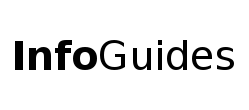
 | University Libraries
| University Libraries
Students will be able to evaluate information, where it comes from, and how it’s used.
(Information Creation as a Process / Authority is Constructed and Contextual)
Some skills that teach to this outcome:
Activity 1:
Name that Source! activity following a short lecture on different types of sources with examples. A brief lecture in advance of the activity is essential for student success in 100/200-level classes. In groups of 3-5 students, have them work together to determine the type of source on this printed worksheet. Students are allowed to Google the sources or look up information to help determine the answer. Give students ~10 minutes to complete—not all students will have finished by the end, but that’s okay. Walk through each question on PowerPoint or using a browser. There are several questions where the source could be another answer depending on the context—make sure to address this in the recap!
A simplified version of this could also be done on Kahoot or on a PowerPoint.
Skills:
Name That Source! Rubric:
|
Criteria |
Not acceptable |
Beginning |
Developing |
Exemplary |
|
Participation |
The group did not complete any of the worksheet.
|
The group completed 3-4 questions of the worksheet |
The group completed 5-7 questions of the worksheet |
The group completed all questions on the worksheet
|
|
Accuracy |
The group did not complete any of the worksheet.
|
The group answered 1-3 questions correctly. |
The group answered 4-6 questions correctly. |
The group answered 7-9 questions correctly. |
Activity 2:
Break students into groups, then ask them to draw their understanding of the peer review/publication process (storyboarding). We will ask them to begin with the following step: Author writes the article. They must describe what happens after this point.
Later in the class, students are asked to annotate their storyboard/the peer review process for potential areas of limitation (e.g. looking at the entire length of the storyboard, we can have a conversation about how long it takes scholarly articles to get published and what this might mean for currency).
Main steps in the Peer-Review process:
Skills:
Peer-Review Process Rubric:
After the activity and group discussion, collect the storyboards and assess them using the rubric below:
|
Criteria |
Not acceptable |
Beginning |
Developing |
Exemplary |
|
Understanding (of crucial steps in the peer review process) |
No steps are included or no additional steps beyond step 1 (provided) are included. |
Some (2-3) steps are included. |
Most (3-4) steps are included. |
All main steps are included in the storyboard.
|
|
Accuracy/Ordering |
None of the steps listed are in the correct order. |
Some listed steps are in the proper order, but some are out of order. |
Most listed steps are in the proper order. |
All listed steps are in the proper order. |
|
Annotations |
No annotations included. |
Annotations are incomplete or do not adequately address the limitations. |
Annotations reflect a basic understanding of the peer review process and its limitations. |
Annotations reflect a full understanding of the limitations of scholarly work. |
Ask a Librarian | Hours & Directions | Mason Libraries Home
Copyright © George Mason University